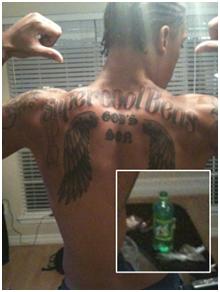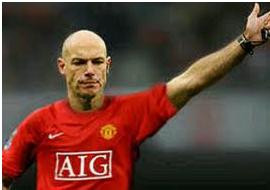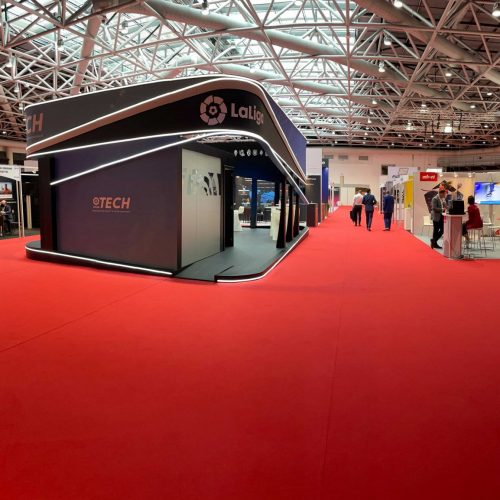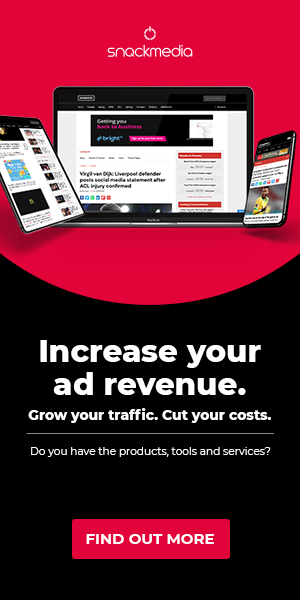To Tweet or not to Tweet, that is the question
Guest Post: Iain Taker is an associate at Kemp Little LLP, specialising in commercial and sports law, and a registered lawyer under the FA Football Agency Regulations. You can follow him on twitter @iaintaker or on LinkedIn
Is Social Media an opportunity or potential threat?
Messages can now instantaneously be sent across international borders to millions of people at little or no cost. Although this reality brings with it significant public relations and marketing opportunities, there is also the possibility of serious damage resulting from ill-considered comments.
This article looks at the positives and negatives of using social media (in particular Twitter) from the perspective of a professional sports body and suggests some safeguards that should be implemented to reduce the risks.
Is social media really that important for sports clubs and players?
Social media is already a very large industry – Facebook alone has in excess of 800 million users and over a billion tweets are posted on Twitter every week. Players and clubs have shown an increasing drive to tweet and be actively involved in social and digital media in order to interact with their fans. It has now reached a situation where fans expect to be able to interact with players and clubs through social media platforms.
The most popular teams and players on Twitter (as at 17 January 2012):
Top 5 followed Sports Teams
- Real Madrid (@realmadrid) – 3.171m (20,015 tweets);
- FC Barcelona (in English) (@FCBarcelona) – 2.770m (8,155 tweets);
- LA Lakers (@Lakers) – 2.292m (9,360 tweets);
- FC Barcelona (in Spanish) (@FCBarcelona_es) – 1.624m (16,657 tweets); and
- Arsenal FC (@Arsenal) – 1.154m (7,026 tweets)
Top 5 followed Sports Professionals
- Kaka (@Kaka) – 8.040m (2,239 tweets);
- Cristiano Ronaldo (@Cristiano) – 6.418m (750 tweets);
- Shaquille O’Neal (@Shaq) – 4.870m (4,130 tweets);
- LeBron James (@KingJames) – 3.268m (2,300 tweets); and
- Lance Armstrong (@lancearmstrong) – 3.220m (8,237 tweets)
Top 5 followed UK Sports Professionals
- #13 Wayne Rooney (@WayneRooney) – 2.591m (679 tweets);
- #25 Rio Ferdinand (@RioFerdy5) – 1.882 m (8,239 tweets);
- #35 Ian Poulter (@IanJamesPoulter) – 1.237m (7,793 tweets);
- #47 Rory Mcllroy (@McllroyRory) – 792k (1,999 tweets); and
- #51 Jenson Button (@JensonButton) – 741k (1,301 tweets).
The importance of interacting with fans through social media should not be underestimated. A player’s or club’s potential reach in terms of the active number of followers they have gives them a particular influence in terms of both framing or adding to the debate of the day and (potential) in terms of revenue generation. Social media enables players to develop a personal profile that is not only based or dependent upon their on-field performances.
It is my belief that Twitter has so far been under-utilised from a revenue generation perspective, and that in the near future clubs and players will be able to advertise significantly more on their page and through their tweets. While advertising on platforms such as Twitter can lead to legal issues such as requirements to comply with consumer protection legislation in relation to endorsements of products these can easily be overcome with specialist advice. The potential power placed into the hands of the clubs and players, through social media platform, can help to create significant additional income streams. Such opportunities are however not fully understood or appreciated by many and yet specialist sports social media organisations, such as the industry specialists recently employed by Wayne Rooney, are available to assist in this area. This may result in, the next few years, an extension of the traditional sponsorship model.
Benefits of using Twitter
Twitter was launched in 2006. One of the great appeals of Twitter for both the sender and the follower is its simplicity; messages are capped at a 140 characters so tweets are short and to the point. Followers find this approach more personable than email and perceive that they are not being overly bombarded by sales materials (even though tweets can contain sales messages or links to marketing materials) or excessive content.
Speed and cost
A significant benefit of Twitter is the ability to be able to speak to millions of fans spread across the world in an instant for free. While sports teams (and players through personal websites) will have significant mailing lists, the likelihood is that Twitter may offer the opportunity to access a significantly larger and geographically more spread fan base than was previously possible (and possibly attract followers that would not otherwise consider themselves fans). The tweets themselves can contain a simple link which will take the receiver to a specified site enabling existing marketing promotions/information to be displayed to any and all users who click on the link.
Multi-platform access means that the average Twitter user spends significantly longer on the site than they do reading their email account. The increasing use of tablet and mobile devices mean that people look at tweets on the way to, during and after work. This ‘hit rate’ is also increased through the use of push notifications which alert the reader when their favourite team or player posts a tweet.
Self-promotion
The player or club can send tweets which contain a link to news concerning themselves which in turn creates greater exposure for their activities and (potentially) their sponsors. This may, for example, be a link to awards they have been given (e.g. Mark Cavendish on his victory in BBC Sports Personality of the Year) or activities that they are involved within (e.g. Phil Neville’s charity work including Cornerstones in Manchester). It has increasingly been used to link into business activities that the professional is involved in whether it be a restaurant they own (e.g. Rio Ferdinand and Rosso Restaurant), computer game they are involved with (e.g. Tim Cahill and FIFA 12) or a connection with a sponsor (e.g. Lance Armstrong and Nike).
Social media platforms are the modern equivalent of ‘word of mouth’ advertising but their functionality and reach is such that campaigns can ‘snowball’ quickly. A good example of this is the American football player Chad Ochocinco who launched a mobile app called Mad Chad solely through advertising and word of mouth on Facebook and Twitter. This app became one of the five most downloaded apps on Apple iTunes Store on the day it was released. A similar ‘traditional’ campaign (namely one which would have reached a similar number of potential customers) would have involved significant expense and advertisement.
Public image
In addition to revenue raising aspects, Twitter has also played a significant role in the public perception of players and clubs. The platform offers fans a way of ‘getting to know’ what the player is really like by being able to seemingly interact with them on a level that previously was impossible for most. It has also helped players re-establish a positive reputation after negative portrayals such as the American football player Reggie Bush in the US who successful dealt with public criticism over allegations relating to his time at USC.
This type of openness and interaction helps to remove the dis-enfranchisement that many fans feel about today’s sports industry. The possibility to enter into discussions (or competitions set by) with high profile sports stars reduces the ‘disconnect’ and makes them more human. For many youngsters receiving a retweet (or reply) from their hero is the modern day equivalent of getting their autograph or photo.
Examples of where Social Media has caused issues
Although there is much good about social media, the bad and the downright ugly are often not far behind. Even though there is the possibility to remove posts and comments, the nature of the internet is such that once something has been posted it is very difficult (if not impossible) to prevent the contents from being accessible in one form or another. Although in some instances too much information is revealed or unwise comments are made deliberately this can also happen quite innocently and unintentionally. A few examples of negative consequences of using social media are set out below.
The footballer, Paul Konchesky, was on the wrong end of an unfortunate social media incident that was not of his own making. During an unsuccessful time at Liverpool FC Konchesky’s mother Carol apparently updated her Facebook status to label the club’s fans in a derogatory fashion (see screen shot below). Unfortunately, her comments were visible to all Facebook users as her privacy settings were not sufficiently strong enough to limit the comment to her ‘Facebook friends’. Despite the removal of the post, it spread through local and national press and did little to help her son’s popularity in and around the club.
A second example is the NBA player, Michael Beasley. In August 2010 Beasley found himself in hot water after posting a photo of his new tattoo on Twitter. The problem was nothing to do with the tattoo itself rather two plastic bags that purportedly containing marijuana. The apparent presence of the drugs in the picture was widely reported on local and global sports blogs and resulted in the player entering into a rehabilitation hospital a few days later.
A third example is the football player Ryan Babel. Babel has the dubious honour of being the first Premier League footballer to be charged by the Football Association due to a posting on a social media site. Following a contentious FA cup match between Manchester United and Liverpool, Babel retweeted (forwarding another person’s tweet) a picture (see below) of the match referee, Howard Webb, which contained the comment “[a]nd they call him one of the best referees? That’s a joke” the picture has been manipulated such that Webb appeared to be wearing a Manchester United shirt. Babel subsequently apologised for the retweet and was fined £10,000. In this situation it is important to note that Babel did not create the image itself but merely passed on a link that another user had created.
Measures to restrict potential problems
There are a number of potential measures that can be implemented by professional sports clubs in order to help prevent issues from arising or to protect themselves in the event that a situation arises.
1. Comprehensive social media policy
Surprisingly, a number of professional sports clubs do not have an estbalished social media policy either included in the playing contract or given to and agreed by the player. Such a policy should set out clear instructions over what is, and what is not, permitted. Best practice would be for it to include a quick reference guide for the player and list contacts of the club who are nominated to handle social media queries who can be contacted as and when necessary. The policy should also set out the internal punishments that may result from an infringement.
2. Set parameters as to what players are allowed to tweet about
A number of football clubs set strict guidelines over what their players are allowed to comment on. For example, matters relating to the club (ranging from team selection, thoughts about fellow players or officials to transfer speculation) are usually off limits. While these guidelines would appear to be no more than common sense it is clear that they are not always followed or effectively enforced, (see for example Joey Barton’s tweets (@Joey7Barton) for a number of examples of disputes with fellow players).
Neil Warnock (former Queens Park Rangers Manager) has gone on record as saying that his squad are allowed to use Twitter only on the proviso that it has nothing to do with the club. While the photo may actually turn out to be innocent it is the public perception of them that can be very harmful, see for example the criticism given to Steven Ireland’s (Aston Villa football player) as a result of a photo showing him smoking a shisha pipe with an unidentifiable drink in his hand. In addition, players should be warned against putting up pictures that may portray them in a bad light such as images that show them smoking, drinking, late night partying and/or gambling.
3. Players (and connected persons) should use privacy settings
The use of strict privacy settings should help to prevent situations of unauthorised tweets/comments being made from player accounts. Any such guidelines or advice should apply equally to persons connected to the player as it is often the case that comments of the player are displayed on their friends’ and family’s pages see the Paul Konchesky case above. Both Twitter’s and Facebook’s default privacy settings are such that tweets and comments are publicly available. Clubs should be able to provide the necessary advice as to how to ensure the settings can be adjusted to avoid personal information being unintentionally sharing of personal information.
4. Blackout periods
Players should not be allowed to use social media for a few hours prior, during and for a few hours after the game. The NFL enforces a social media blackout for the period commencing 90 minutes prior to the match and ending after the post-game media interviews. The NBA has enforced a similar rule starting 45 minutes prior to the match until after the post-match obligations. Chad Ochocinco (Cincinnati Bengals player) was fined $25,000 for posting two messages during a pre-season game in August 2010.
As emotions run high, the danger of reacting to a situation in the immediate aftermath is significant and can have far reaching implications. As shown by the £10,000 fine given to Ryan Babel (discussed above), the Football Association will punish players for indiscretions. It is not inconceivable that severe indiscretions will in the future be met with a suspension and little is likely to upset a player’s employer more than having their star player banned for heat of the moment comments.
5. Pre-approval of content
While this may on the face of it seem an arduous step for players, the reality is that often ‘communications’ through player’s websites/blogs are not actually written by the player themselves. An increasing number of celebrities (for example the actor Ashton Kutcher) do not post to Twitter directly but rather through an intermediary. In a world that takes an instant to read but a significant time to forget a post such a pre-caution would be wise. The consequence of having a dedicated individual at the club who handles social media issues for players is that the club will have a greater awareness over any potential conflict and can implement damage limitations procedures quickly. For example the Manchester United players have access to a member of the club’s staff to clear any tweets which relate to the club.
6. Educate the players themselves
An important step to minimise issues is to educate the players over the potential pitfalls of inappropriate use of social media. The potential implications can include a ban from playing, fine from governing body, fine from club, loss of sponsors and loss of fans. Such an education should include the potential consequences of re-tweeting without fully understanding (or examining) the content of the tweet which may include an unsuitable link. The advice to the players should be:
- do not share too much;
- know who they are sharing it with;
- double check that they are happy to be associated with everything they are sharing; and
- if in doubt check with a club official.
The education should include details of the legal consequences that may arise from the use of Twitter such as potential claims for defamation or breach of contract (e.g. where a contract has a morality provision and the player is shown drunk/using drugs etc.). What may seem a harmless comment or bit of fun can soon turn out to be a very damaging and expensive decision.
7. Have a damage limitation plan
Where a situation comes to light that a tweet which contains unsuitable comments/links or photos has been posted, the player or club should have a clear and detailed damage limitation plan that should be implemented as soon as possible. While the damage may not be fully contained as it is likely to have been captured or retweeted, it is important to minimise the damage/publicity as far as possible. In addition, it may be beneficial to clarify a statement which has been taken out of context. An apology should also be issued if any offence (or potential offence) has been caused as in the case of Ryan Babel (as shown below). This may help reduce the knock on effects (as often it is how situations are handled that is remembered) and any subsequent punishment handed out.
8. Seek specialist advice for monetising the potential
Further to having a social media policy in place in order to fully exploit the potential, in particular in relation to revenue making opportunities that social media can offer it is essential to deal with experts within the field. Such specialists can implement solutions that would ensure potential public relations issues can be avoided such as a player advertising a product that is a direct competitor to a principal sponsor of the club.
Conclusion
Twitter is a platform that offers clubs and professionals significant opportunities to increase awareness, business opportunities and their public perception. The important part is to recognise (and limit) the potential pitfalls that such an opportunity can present. Both clubs and players would be well advised to use a specialist to handle this aspect of their marketing. The financial benefits of social media have yet to be fully developed and exploited, a situation that will undoubtedly change as the trend away from traditional to digital media forms continues. The implementation (and enforcement) of a clear but complete social media policy is fundamental as clubs will no doubt wish to retain some control over their players’ ability to make public comments. Given the potential benefits and costs associated with social media, it is highly advisable to implement and enforce a very thorough social media policy as well as a comprehensive education programme. In my opinion the potential and opportunities of social media have yet to be fully realised by most and clubs and players who focus upon this area will be well rewarded.
Note – You can check out other articles on Twitter and athletes below:
‘Twitter Ye Not’ – a BBC article
Are the media obsessed with banning players from Twitter?
Football clubs must take responsibility for their players twitter mishaps!
How would I advise sports stars on using Twitter and avoiding the pitfalls
About author
You might also like
SPORTEL 2021: Day One Recap
This year’s prestigious SPORTEL convention kicked off in sunny Monaco today, welcoming a host of familiar faces as well as plenty of new ones. Doors opened at 8:30am with businesses
Six Founding Riders Set To Bring The Vision Of The UCI Track Champions League To Life
Olympic Champions, UCI World Champions and World Record holders join the new track cycling competition debuting in November 2021 The UCI Track Champions League is delighted to announce that six
Sports related spending to soar this summer as pre-pandemic life resumes
New insights from eBay Ads UK reveal the potential for brands to engage with an excited but nervous nation as sports events get back on track As pubs and indoor












